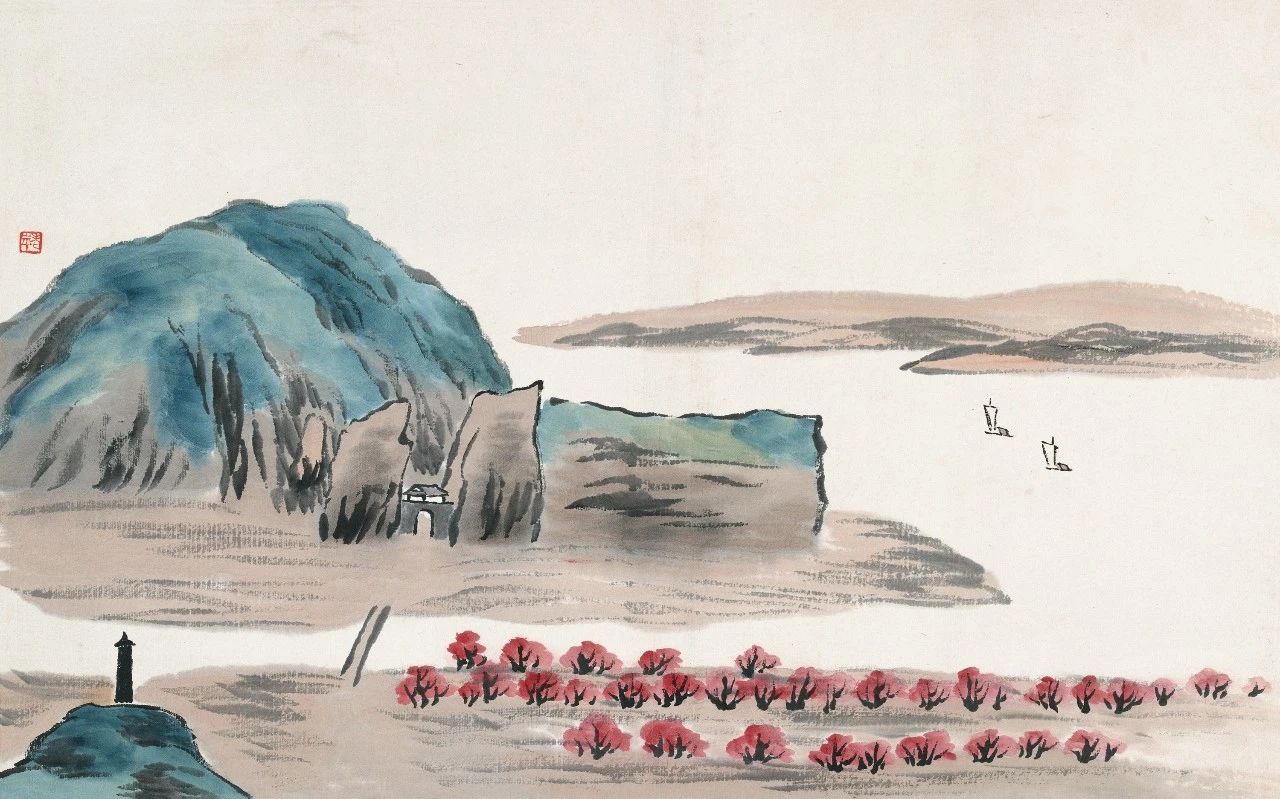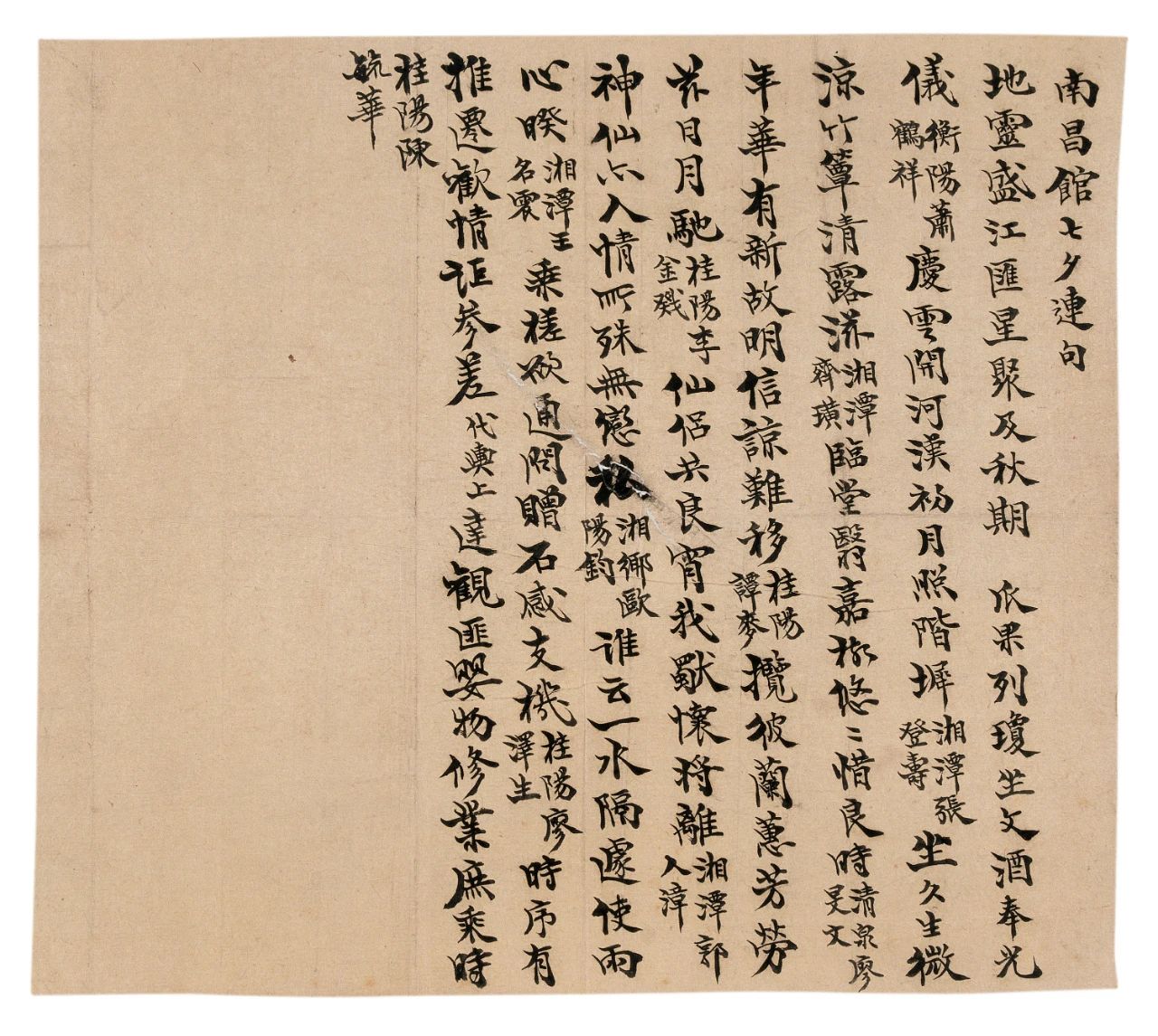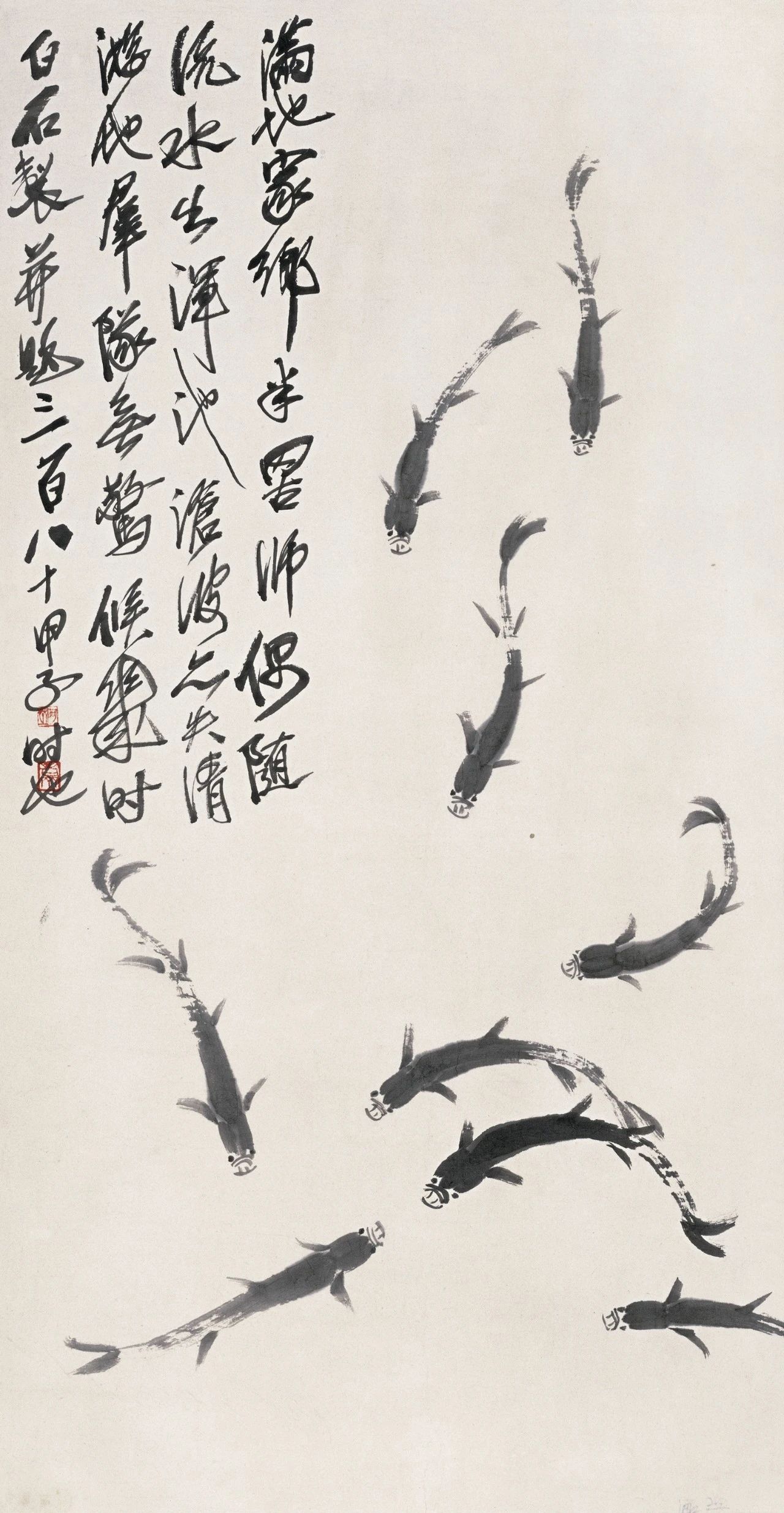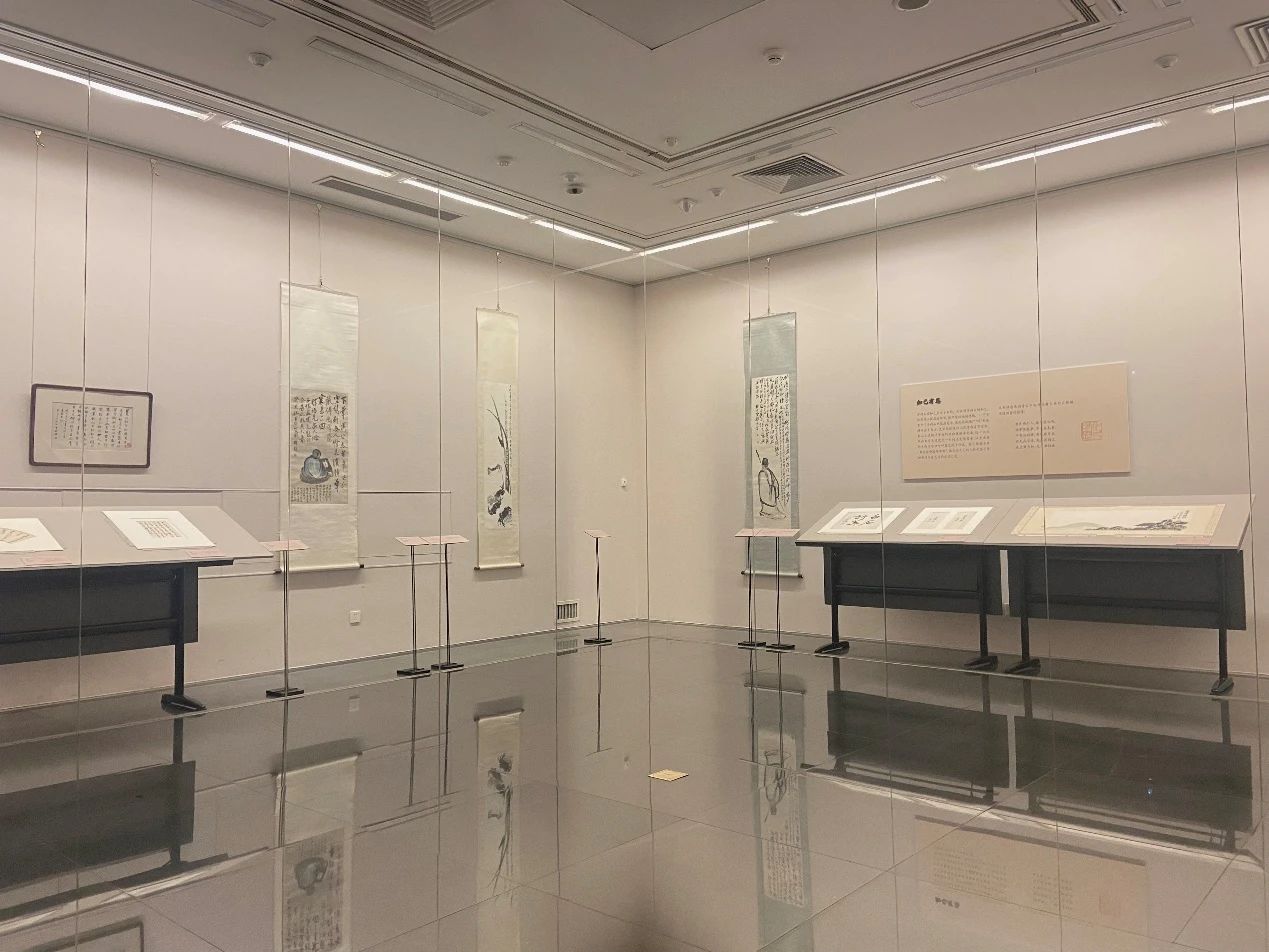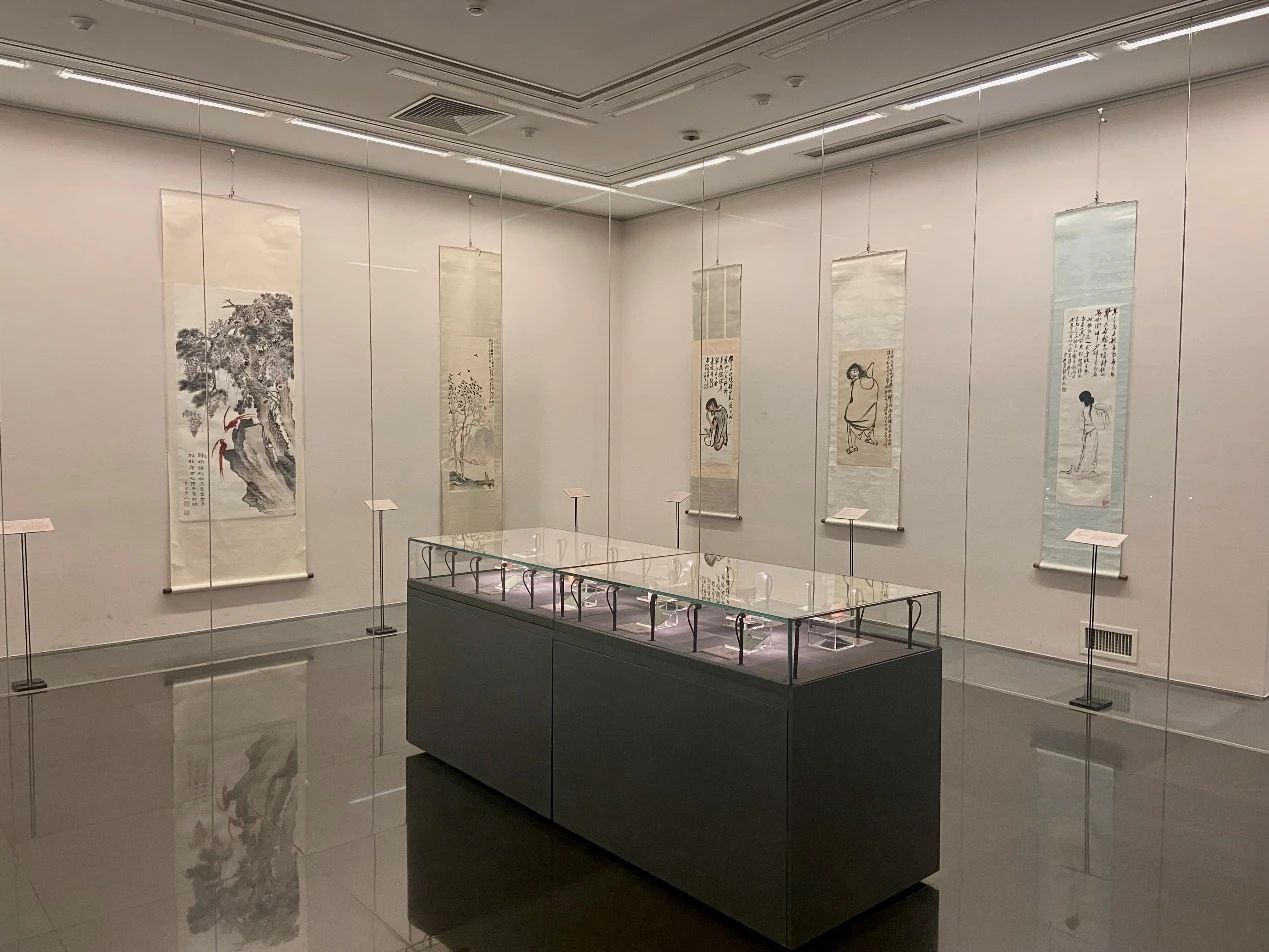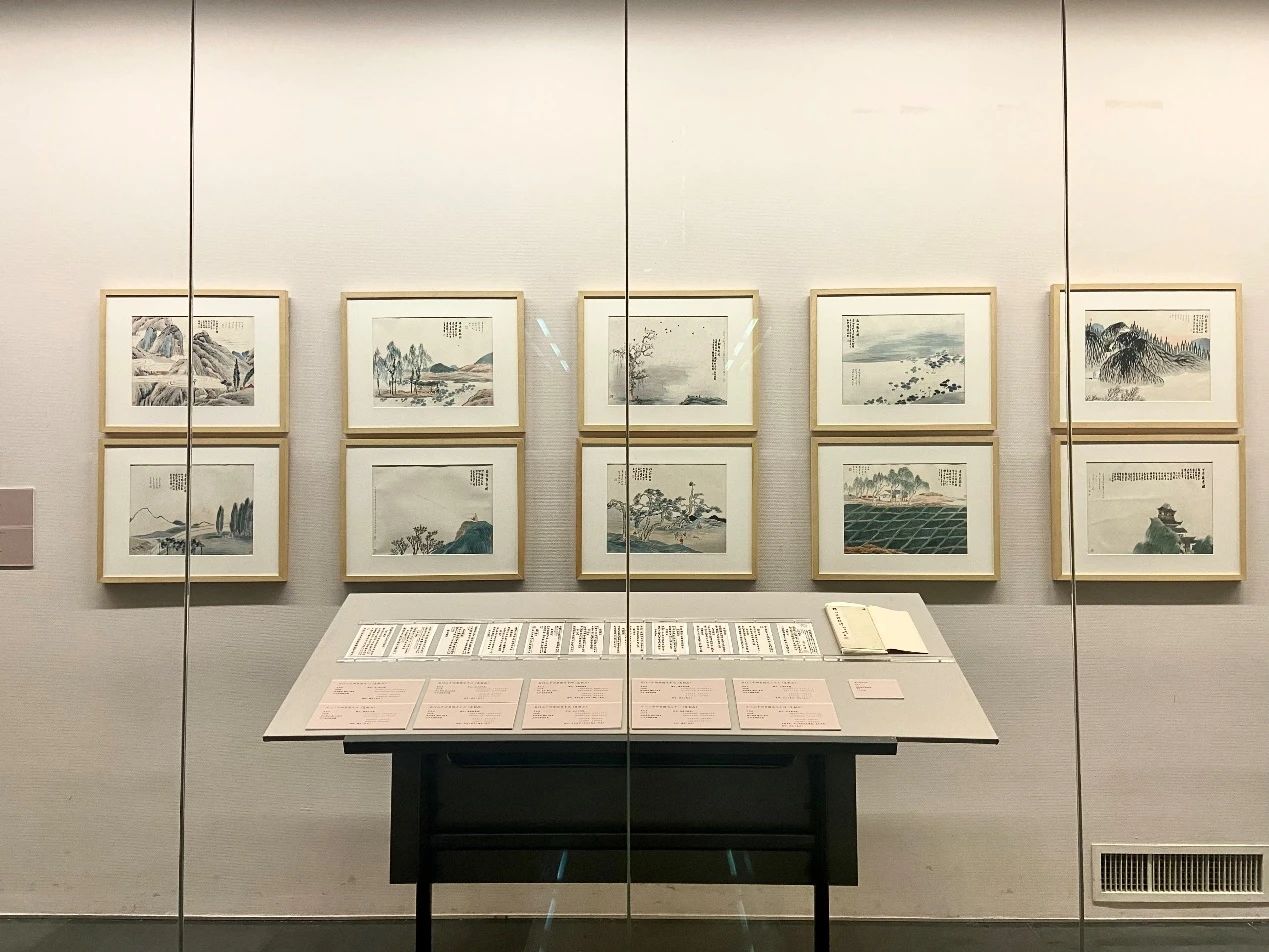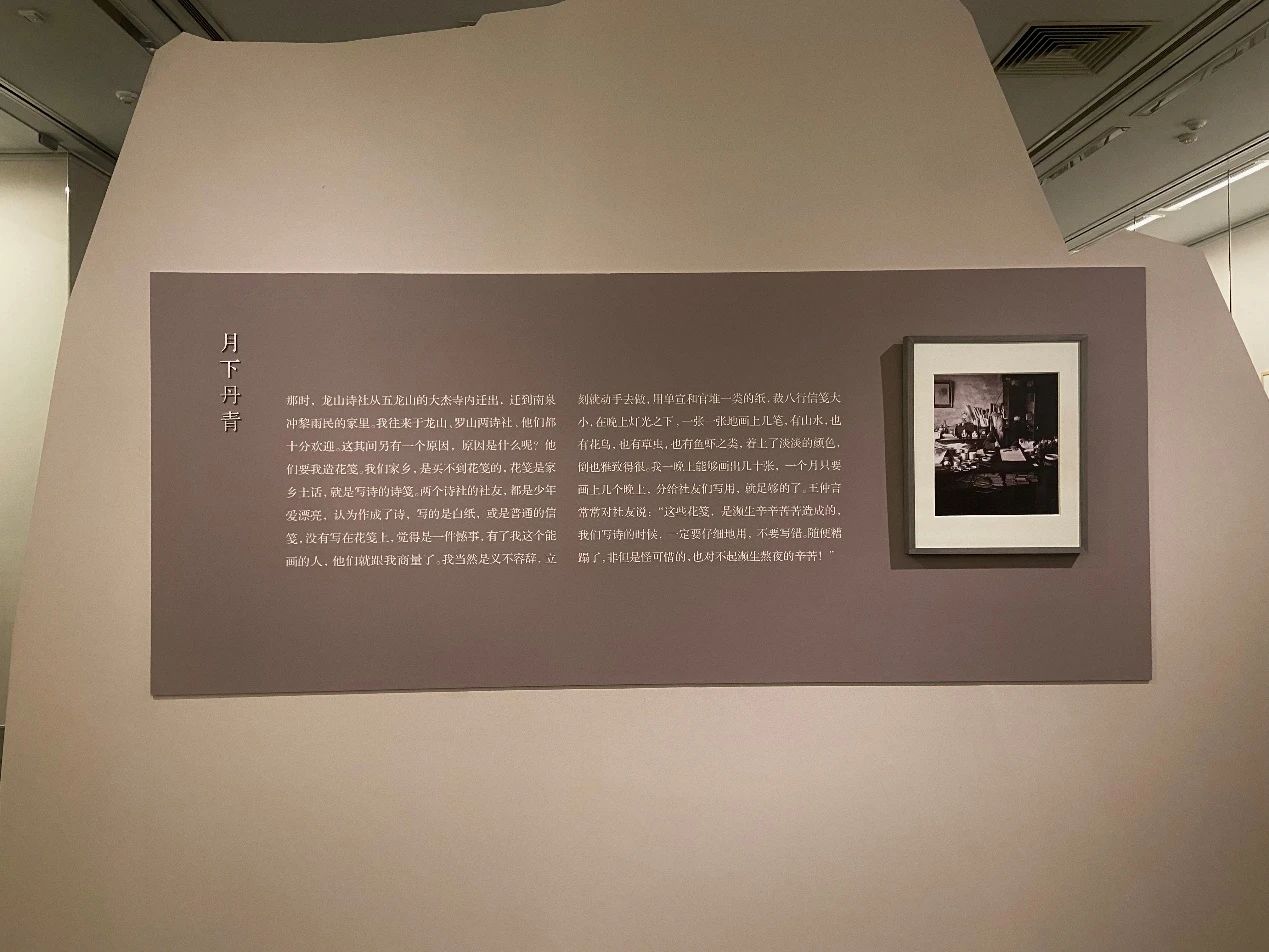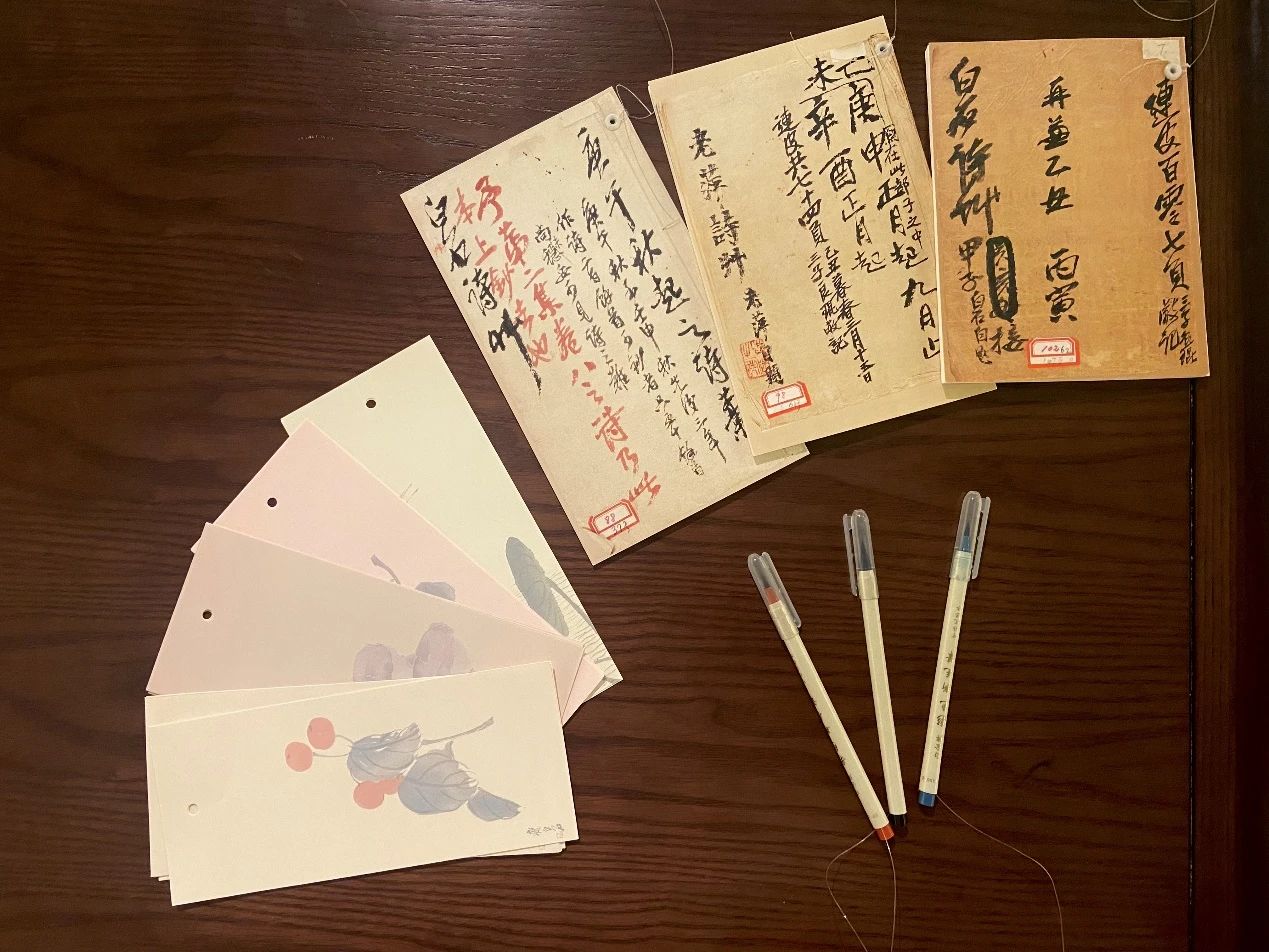Jieshanyin——Qi baishi’s Pictorial Poetry Heart
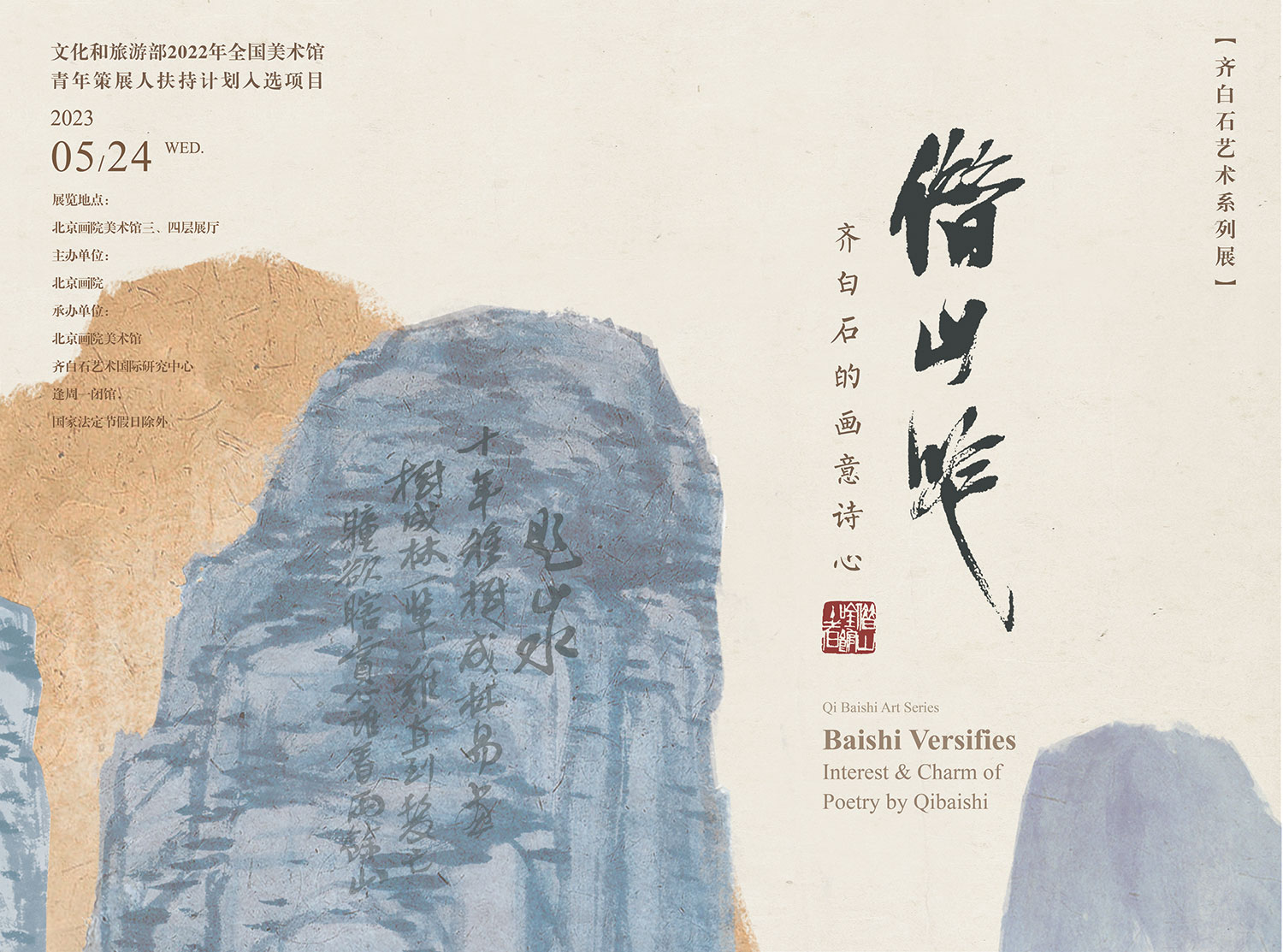
- show time:2023-05-24 to 2023-11-24
- Organizer:Beijing Fine Art Academy
- venue:the third and fourth floors of Art Museum of Beijing Fine Art Ac
The exhibition “Jieshanyin——Qi baishi’s Pictorial Poetry Heart" hosted by Beijing Fine Art Academy, undertook by Qi Baishi International Research Center and Art Museum of Beijing Fine Art Academy opened to the public on the third and fourth floors of Art Museum of Beijing Fine Art Academy on May 24, 2023.
As is known to all, Qi Baishi was famous for his painting and calligraphy. But he always emphasized his identity as a poet and said: " My poetry comes first, seal cutting second, handwriting third, and painting fourth."The number of poems is the highest collected among the manuscripts of Qi Baishi in Beijing Fine Art Academy, which were complementary to his practice of painting and calligraphy. Since the establishment of Art museum in 2005 and the establishment of Qi Baishi Art Research Center, Beijing Fine Art Academy has been committed to the research of more than 2,000 collected works and documents of Qi Baishi over a long period of time. Through the working method of “A straw shows which way the wind blows", we have expanded to the cooperation with national and even global institutions, and now spread to poetry, literature, philosophy, opera, architecture and other fields, trying to enrich the ideas of Qi Baishi's art research in an interdisciplinary way.
In 2014, the Academy launched an exhibition of Qi Baishi’s letters which is based on the continuous exploration of the same theme.This exhibition focused on the research of Qi Baishi's poetry and art, traced back to the course of learning poetry and creation background, explored the relationship between his poetry and painting creation, and revealed Qi Baishi's unique life experience and emotional spirit. The exhibition contains more than 100 art works created by nearly ten renowned scholars, including Qi Baishi, Wang Kaiyun, Chen Shizeng, Fan Zengxiang, and Lao She. The paintings, calligraphy, seals, poetry manuscripts, letters and documents present Qi Baishi's Pictorial Poetry Heart in a comprehensive and three-dimensional way. The exhibition was chosen into "2022 National Art Museum Youth Curators Support Program" of the Ministry of Culture and Tourism.
Learning Poetry: Burn the Pine fire to Illuminate Tang Poetry
Qi Baishi had a poor family circumstances in his childhood. At the age of eight, he attended a private school with his grandfather for more than half a year. When he was 27, Qi Baishi studied Chinese fine brushwork flower-and-bird painting under the guidance of Hu Qinyuan.Then under Hu’s recommendation, Qi Baishi studied poetry with Chen Shaofan through reading. In order to supplement the family, he worked as a carpenter during the day and read books at night. Moreover, he had a poem "The Past" which said "What's the worry of a lamp without oil? Burn the pine fire to illuminate Tang poetry."This poem recorded his experience in his early years. In the same year, Qi Baishi won the praise of the public with a Seven-Character Poem in Elegant Poetry Festival held in Hu Qinyuan. During the period, Qi joined "Longshan Poetry Society" which was initiated by Wang Zhongyan and others, and then he was elected as the president. Qi Baishi also joined "Luoshan Poetry Society" organized by Li Songan. Qi Baishi composed and sang poetry with his poetry mates and drew poetry notes for them.Qi Baishi mastered the rhythmic poetry techniques of rhyme, antithesis, and allusions during this period. In 1900, he rented MeiGong Temple which stood under Lianhua Zhai, built a bookstore, and named it “Jieshanyin House”.
After returning from a long trip, Qi Baishi devoted himself to ancient Chinese poetry. He often recite couplets with friends and pondered his thoughts. After feasting his eyes on the landscape and enjoying the beauty of nature, he rearranged the rough drafts on his way to travel and created a poetic landscape poem called"Jieshan Tu Juan". At the age of 37, Qi Baishi acknowledged Wang Xiangqi who is a famous Confucian scholar and the representative of the Huxiang Poetry School as master and learn from him. Xiang Qi learned from Wei and Jin Dynasties, was proficient in precision work. He critisized Qi Baishi's poems as "Xue Pan's style". Although Qi’s creation concept was different from his teacher, he realized that learning poetry is not easy. Qi needed to start with five-character poetry as well as learn Tang poetry and paintings, so as to lay a good foundation for poetry writing. The original intention of learning poems was not to seek fame. In contrast, Qi’s poems were mostly composed to mold his temperament and was not bounded by vulgar standards.He advocated for ”No need for decoration, but emphasize the expression of spirituality”, building a unique poetic spirit.
Poetry and Literature Communication: Writing Poems and Making Friends
Poetry creation is a way to express feelings and emotions, and also carries the social function of literati. The combination of poetry and prose flourished during the Han and Wei dynasties and flourished during the Tang and Song dynasties. It not only expanded the channels for literati to build relations, but also had important academic value in the development of poetry. Qi Baishi said, "My poems are both lyrical an chronicle."In his life of pursuing art and keeping company, he and his friends wrote countless poems and essays, and also left many ups and downs or interesting anecdotes. Qi Baishi often participated in the activities of the poetry fair with his teacher, and entered the cultural elite circle of Huxiang woven by Wang Xiangqi. Therefore, he was able to get acquainted with celebrities and scholars. In 1904, Qi visited Nanchang, Jiangxi province at Wang Xiangqi's request. When it happened to be Qixi, the teacher invited the match gates, and started singing with "Rivers converge on the earth, planets gather in the sky, and autumn has arrived". However,Qi Baishi and his mates were not connected. Qi Baishi felt ashamed about it, so he deleted "Yin" word at once he went home .
In the exhibition,"Nanchang Pavilion Qixi Couplet" in regular script hid in Beijing Fine Art Academy, on which Qi Baishi created Nanchang Joint sentence "I feel a hint of coolness when sitting for a long time, Dew can be felt on the bamboo mat." (This sentence was probably copied by Wang Xiangqi.) confirmed the interesting story between the master and apprentice. Qi Baishi spared no effort in poetry management. He not only studied poetry from teachers and exchanged poetry skills with friends, but also asked Fan Zengxiang, a poet in the late Qing Dynasty, to polish his poems and actively planned and publish poetry collections. In 1917, Fan Fanshan wrote a preface to Qi Baishi's "Jie Shanyinguan poetry", which said "These poems, seemingly ordinary, are all written from poor thought and hard work, with a deliberate intention and a taste beyond it". The words were all words of praise. And "Poem(express gratitude to Qi Baishi for giving goose down quilt)" on the exhibition, also indicated their deep affection. In addition, the exhibition presents the painting and calligraphy documents about Qi Baishi, Chen Shizeng, Chen Banding, Yu Youren, Luo Dunrong and other 20th century Chinese literary artists, telling the deep friendship among Qi Baishi and his teachers and friends. The viewer can also restore the more three-dimensional Qi Baishi in the group images of poetry through multiple perspectives.
Uniformity in poetry and painting: Mood of painting, Poetic heart accompany each other
Poetry is the language of soul, painting is the reflection of interest. Chinese painting art pays attention to "uniformity in poetry and painting", and emphasizes different and interconnected between poetry and painting. Poetry is auditory art, giving painting with emotion. However, painting is visual art, giving poetry with image. Song Caitao’s "Xiqingshihua" said “Painting and poetry complement each other.”This concept of complementary poetry and painting promotes the development and prosperity of poetry and poetic painting. In 1906, Wang Zhende said in“Qi Baishi's Poems and inscriptions” that " Qi Baishi's poems are mostly poems inscribed on paintings,and usually poetic first and then sublimated into the mood of painting. The poetic feeling of social life is the basis of his painting and printing creation." Qi Baishi's painting and calligraphy art is innocent and plain. He turns the perceptual experience into the wonderful understanding of the soul, and experiences the internal logic of the relationship between poetry and painting. Poetry and painting complement each other. His painting poems either strike the heart, reflecting deeply nostalgic to the hometown, or have metaphorical analogy, expressing the understanding of the world, or feel something upon seeing it, revealing the people and the feelings of trouble.
Beijing Fine Art Academy collects a letter written by Lao She in 1951. The letter takes four Ancient Poems as the title which roughly writes inviting Qi Baishi to paint and attaching people's voucher as the painting fun. Qi Baishi was invited to create "The sound of frogs comes from a mountain spring ten miles away" with the poem of Zha Chubai, which transformed frog into tadpoles in the painting, while the sound of spring grafted the sound of frogs, which can be said to be a classic work of poetry and painting. The inscription of "Small Fish" which says "When can I stop my panicked life", conveys the expectation for a peaceful home, and echoes the panicked fish in the painting. In 1919, after arriving in Beijing, Qi Baishi lived in Fayuan Temple, Longquan Temple and Shijing Nunnery, and had close contact with monks. He thought he was quite associated with Buddhism and called himself "Monks who become monks in their hearts". His inscription of "A Buddha sitting in the shade", which says "I don't have a Lian Huazuo, but still feel like resting in a Maitreya niche.I search for solitude, and in my eyes, I see Yuntan", perhaps this is his internalization of the Buddha spirit in the heart.
Poetry and Era: Poetry Requires Talent, Not Just Reading
Yan Canglang, born in Song dynasties said in "Canglang poetry" : "Writing poetry requires different talents, which have nothing to do with the amount of knowledge; Writing poetry requires a different kind of interest and has nothing to do with abstract reasoning. "Chinese poetry emphasizes true feelings, expresses the soul of the poem, and reflects the poet's temperament and aesthetic taste. Qi Baishi was born in the peasant class and dropped out of school in his early years. He made a living all his life. Whether it's his poetry or paintings, he draws more creative materials from Chinese folk culture, expresses his own life experience, and shows the true feelings of ordinary people. He said, "My poems writes what I want to say in my heart. Do not deliberately seeking high skill and had no intention of learning from the Tang and Song dynasties." Not only interested in the poetic love and ink interest of literati, but also maintain the love of real life. Everything in the world has become poetic painting material under his pen, and is endowed with leisurely poetry, humorous poetic interest, and plain and simple poetic principle.
In the exhibition, the inscription of "Cabbage and Carrot" says "To solve a wish that was not completed in the previous life. Picking up a brush to write a poem is too painful. The vegetables in the garden also have earthly blessings. Because they have seen the painting of the person in front of the window." Simple materials and plain language expressed Qi Baishi the most real feelings of life. The title poem of "Grape" writes "The fruits of the grapes were shaking and the shadows in the sunlight seemed to be frightened, like dragons and snakes trying to fly away." which expresses the ordinary things in daily life with romantic techniques. The inscriptions of “ZhongKui scratching his back” says “The itchy area is not below, but rather on the bottom. The itchy area is no longer above, but on the top. How can you know where I itch outside of my skin.” The green head in the painting scratches for Zhong Kui but always not in its position.It seems to be closely related to the vivid details of real life, and is extremely philosophical. The exhibition also presents drawings of the work, which have not only the traces of the poem revision, but also the creative sources of the works. Qi Baishi's poems are informal and contains fresh vitality. They are close to the people. No matter what subject and form are, Qi can freely expressed and made a wonderful essay. This characteristic of both refined and popular tastes fits the cultural atmosphere of the new literary trend of the 20th century. It can also awaken the poetic heart of the current public with a particularly concrete and vivid picture, bringing us back to the inner spirit, and carefully appreciating the poetic life aesthetics of the Chinese people.
In order to balance the academic and universal nature of the exhibition, we will interweave the poetic and interesting life of the elderly with the tone of "telling stories". In order to present a more three-dimensional and fresh Qi Baishi to the audience. The audience can also feel the poetic interest and feeling of Baishi on the fancy stationery in the interactive area of the exhibition.
The exhibition runs until November.



